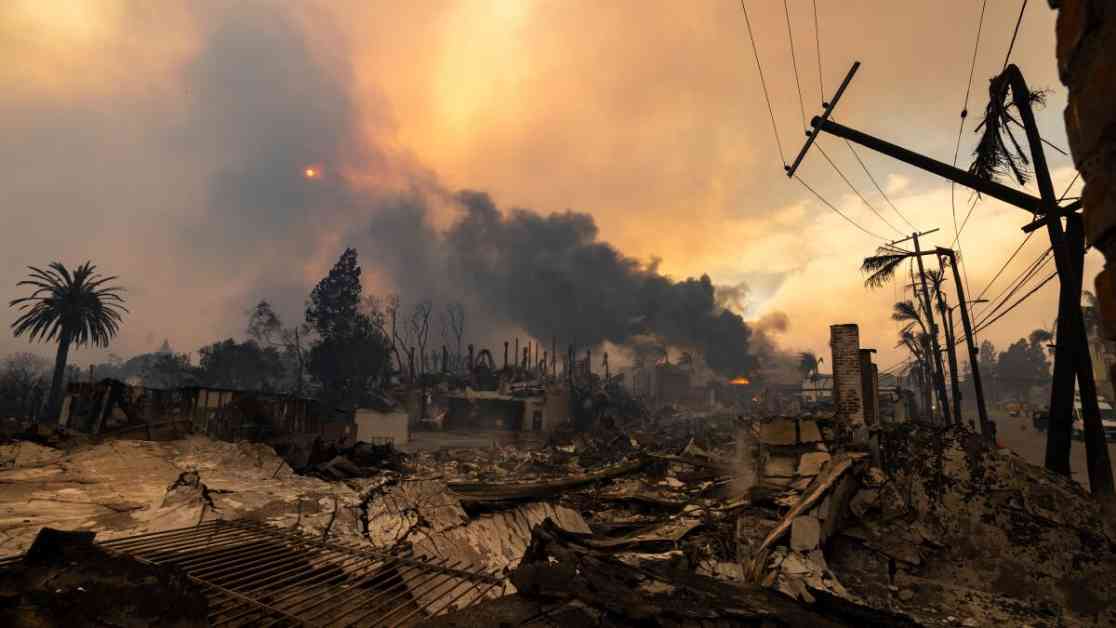Rising Power Grid Faults Spark L.A. Firestorm: What Happened?
The power grid near three major Los Angeles County fires experienced a significant surge in faults right before the blazes erupted, according to Whisker Labs, a company that monitors electrical activity. Bob Marshall, Whisker Labs’ chief executive, revealed in an interview with The Times that the areas surrounding the Eaton, Palisades, and Hurst fires all witnessed a dramatic increase in faults leading up to the fires. These faults on the power grid result from various causes such as tree limbs hitting electrical wires or wires colliding with each other, ultimately leading to sparks that can ignite fires.
**Uncovering the Data**
Data shared exclusively with The Times indicated a spike in faults before the fires broke out. For instance, in the hour before the Palisades fire ignited, there were 25 faults on the grid, dropping to 18 faults when the fire started. The Eaton fire had an even higher number of faults with 50 occurring in the hour the fire began. Similarly, the Hurst fire reported 51 faults when it was first reported after experiencing four hours of continuous high fault levels, with 120 faults in the four preceding hours. Despite the sparks flying in the area, energy remained on, as the lines were not de-energized before the fires ignited.
**Insights from Whisker Labs**
Whisker Labs utilizes Ting sensors to monitor electrical data from around 14,000 homes in Los Angeles. While these sensors help prevent electrical fires in homes, they also offer valuable insights into the overall power grid. Robert Garcia, the Angeles National Forest fire chief for the U.S. Forest Service, highlighted that the cause of the Eaton fire is still under investigation, considering various factors such as public activities and power lines in the area. Similarly, L.A. fire officials are still reviewing the cause of the Palisades fire.
**The Urgent Need for Awareness**
Marshall emphasized the significance of utilities paying attention to the data collected by Whisker Labs to understand when the grid is stressed and prevent potential fire outbreaks. The data revealed that faults in the days leading up to the fires were minimal, indicating a sudden surge in electrical faults before the fires erupted. Despite the challenges, efforts are being made to investigate the root causes of these devastating fires and implement preventive measures to safeguard the community.
As we navigate through the aftermath of these destructive fires, it is crucial to recognize the importance of early detection and intervention in potential electrical hazards. By leveraging advanced technologies and data analytics, we can work towards a safer and more resilient future for all. Let us remain vigilant and proactive in safeguarding our homes and communities from unforeseen disasters.

